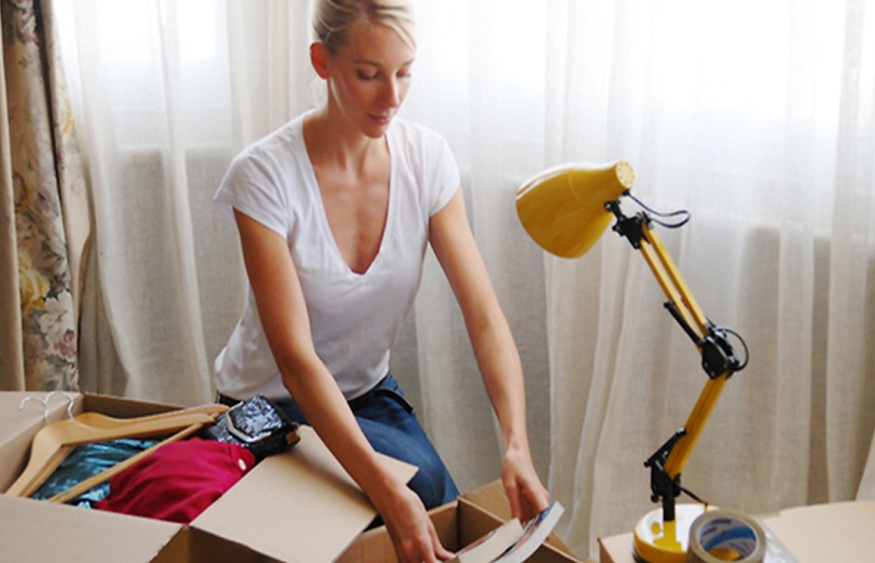Moving can be stressful, even if you only move down the street. The prospect of packing, arranging movers, and transporting everything safely to your new home makes it easy to procrastinate until the last minute. By following these six tips, however, you can make sure that your move is efficient and stress-free so that you can get to living in your new home as soon as possible! Read on to learn more!
1. Hire the Right Moving Company
The worst part about moving is not having help. Moving companies can make moving much more manageable. Instead of doing all of it yourself, let movers take care of everything from packing to unpacking. Hiring professional movers will ensure that they take care of your belongings and arrive safely at your new home.
If you’re looking for a mover, do your research and check reviews. It would help if you also asked them what services they offer so you know exactly what you’re paying for in the package. If you want to save money on your move, try booking in advance to get significant discounts for early booking. You can contact Meyer Moving & StorageCompany for professional assistance with your move at affordable rates.
2. Don’t Leave Packing Until Last Minute
While it may seem like an easy task, packing is often one of those things most people put off until right before their move. It’s worth taking care of packing well in advance. It will help you get organized and also you’ll be able to pack up your belongings slowly, item by item, without stress. No need to rush into things!
Early packing also gives you time to streamline any challenges while packing (such as finding boxes or figuring out how to pack certain items). If you wait until the last minute, there’s more chance that something won’t fit in your car or won’t make it on time. Leaving everything till the last minute can add unnecessary stress to what should be a fun process.
3. Get Organized and Label All Your Boxes
When moving, it’s easy to forget what’s in which box. That makes unpacking stressful. Before you start packing your boxes, you should takeabout 15 minutes to sit down and label them all clearly. The more organized you are at each move stage, the less stress you’ll experience as you unpack everything in your new home.
Labeling is also essential if you plan on storing any boxes after your move. It will make it much easier to find things when you want them later. Also, remember to include warning stickers such as; Fragile, This Way Up, or Do Not Stack. These small but essential additions can help protect your belongings during transit.
4. Create a Home Inventory
Your inventory should include photos and detailed descriptions of your possessions. Think outside of your typical boxes, too: If you have antiques or other one-of-a-kind pieces, write down their place in history. The more detailed you are with your inventory, the easier it will be to move on when it’s time.
A checklist will also help you identify special packaging needs, like extra padding for your grandma’s antique plates. Finally, an inventory is a good idea if you plan to ensure your belongings. If anything suffers damage during transit, having an accurate list of what was in each box can go a long way toward helping you receive reimbursement from your insurance company.
5. Use the Right Materials for Packaging
One of the easiest ways to keep your move cost under control is to plan and use quality packing materials, such as durable boxes and moving blankets. Choose appropriate packaging containers and cartons for your move, and ensure you’re using proper tape (too much or too little can make a huge difference in how long your belongings stay safe). Make sure you’re choosing affordable moving supplies that will protect your furniture.
Take note of any unique requirements before you begin packing; if you have anything fragile or antique, use packaging materials that will take extra care with it during transit. For example, bubble wrap is great for smaller items but doesn’t offer much protection against shifting objects. If you have something like an heirloom vase or a grandfather clock, choose a specialty box to accommodate its size and shape.
Conclusion
Moving can be challenging but doesn’t need to be stressful. By following these tips, you’ll have a smooth transition from your old home to your new one. Remember, it’s okay if you don’t finish all of these steps in one day—take it slow and steady, and soon enough, you’ll have moved into your new place without any stress! However, hiring an experienced moving company is a great way to ensure your move goes smoothly. If you’re looking for a local mover, contact professional who can handle your needs, whether residential or commercial moving services, effectively and at affordable rates.

